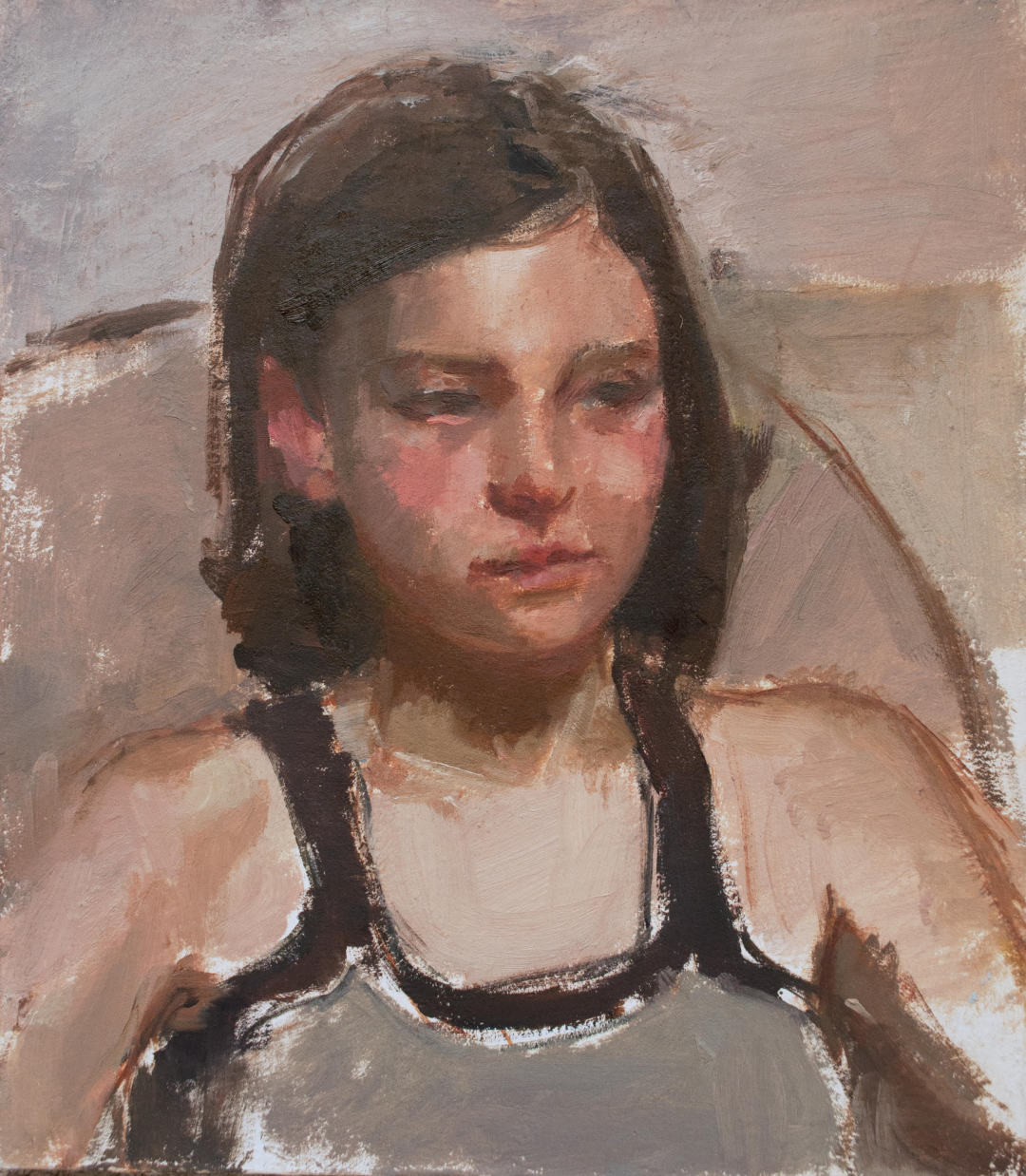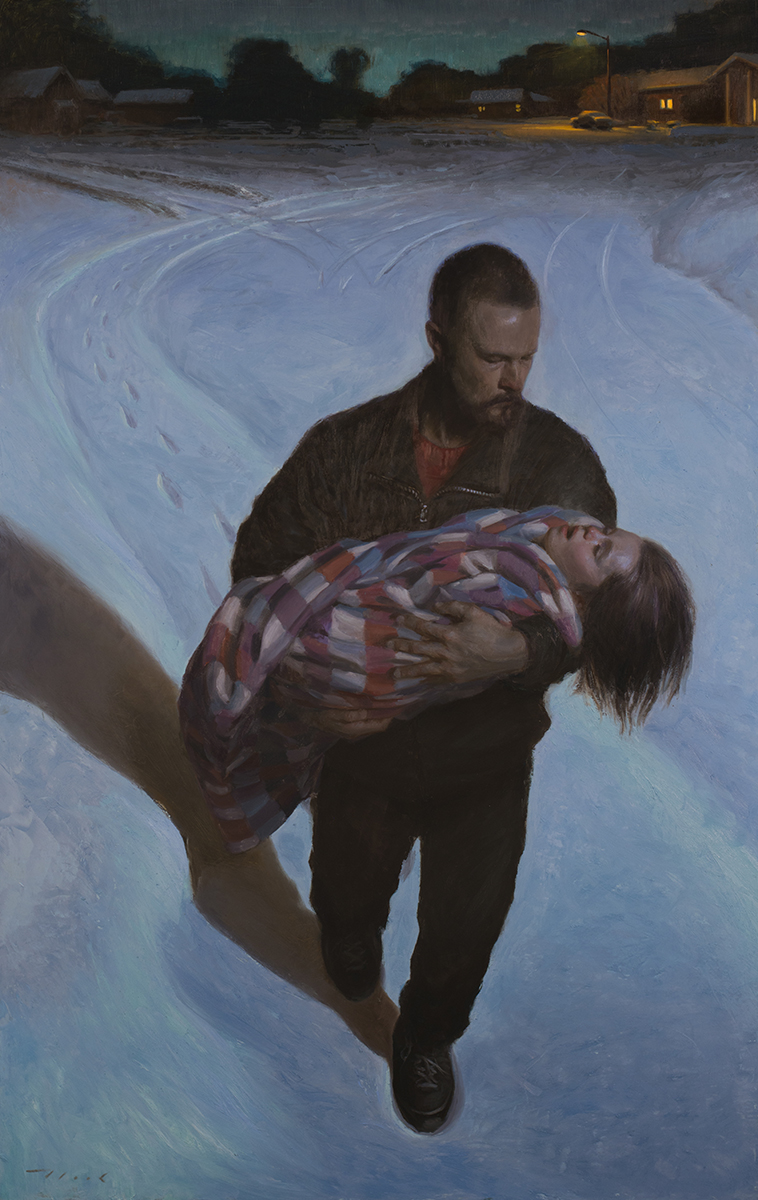Mastering Composition and Color in Figurative Oil Painting
The Development of Figurative Oil Paint: Recognizing Its Historic Importance and Modern Interpretations
The advancement of figurative oil paint serves as an engaging lens through which to check out the interplay in between creative expression and historic context. Contemporary artists, attracting from this rich heritage, are currently reinterpreting the human figure in means that challenge standard narratives.
Beginnings of Metaphorical Oil Painting
The beginnings of figurative oil painting can be mapped back to the early Renaissance in Europe, specifically in the 15th century. This period marked a substantial departure from the stiff kinds and flat representations characteristic of middle ages art. Musicians started to discover naturalism, emphasizing the human figure and its psychological expression. The development of oil paint permitted higher deepness of color and detail, boosting the realistic look and vibrancy of their work.

In this transformative age, figures were frequently portrayed within contextually rich environments, showcasing not only their physical features yet additionally their mental states. Pioneers such as Jan van Eyck and Titian utilized the medium's adaptability, employing layering techniques to accomplish brightness and texture. This advancement assisted in the representation of complex fabrics and the subtleties of skin tones, adding to the development of portraiture and narrative scenes.
Additionally, the Renaissance focus on humanism promoted a recognition for individuality, which in turn affected artists to develop more relatable and dynamic figures - figurative oil painting. Therefore, metaphorical oil painting arised as a powerful lorry for narration and emotional interaction, laying the groundwork for future imaginative movements and designs
Secret Historic Movements
Substantial historical activities have formed the evolution of metaphorical oil painting, each adding unique approaches and techniques that broadened the tool's possibilities. The Renaissance noted a zero hour, emphasizing realism and the human kind, with artists like Leonardo da Vinci and Michelangelo pushing the borders of anatomical precision and viewpoint. Following this, the Baroque era brought significant contrasts of light and shadow, exemplified by Caravaggio, that instilled religious styles with extreme emotionality.
The 19th century introduced Romanticism and Realism, where musicians such as Delacroix and Courbet tested classical suitables, concentrating on specific expression and everyday life. The development of Impressionism better transformed the tool by stressing the effects of light and color, causing a separation from traditional representation.
In the early 20th century, motions like Expressionism and Cubism redefined metaphorical paint through abstraction and the exploration of emotional depth. Each of these motions not just mirrored the social changes of their times but likewise prepared for modern analyses. The interaction in between these historic movements has created a rich tapestry of styles and viewpoints, affecting contemporary musicians in their quest of catching the human experience on canvas.
Strategies and Products Development

Throughout the Baroque duration, techniques such as chiaroscuro and sfumato arised, improving the emotional vibration of metaphorical compositions. Musicians started to experiment with lusters and impasto, manipulating structure and luminance. By the 19th century, developments like making use of pre-mixed paints in tubes revolutionized availability, enabling musicians to paint en plein air and record the short lived results of light.
The 20th century saw the introduction of artificial pigments and tools, which increased the scheme and changed the consistency of oil paints. The exploration of new application methods, such as combination blades and brushes of varying tightness, more diversified artistic expression. Collectively, these advancements show the developing relationship between materials, methods, and the creative vision fundamental in figurative oil paint.

Contemporary Interpretations
Contemporary interpretations of metaphorical oil painting mirror a vibrant dialogue between tradition and technology, where artists test established standards and explore diverse themes. This development shows up in different methods, as modern musicians mix classic techniques with contemporary principles, frequently attending to social, political, and individual narratives.
Many specialists draw inspiration from historical jobs, yet they instill their pieces with modern perspectives, making use of the human type as an automobile for discourse on society, sex, and identification. Artists progressively explore abstraction, distortion, and blended media, which enables a broader interpretation of the figure and its context.
Moreover, using dazzling shade palettes and unconventional structures typically serves to interrupt standard watching experiences, prompting crucial interaction from target markets. This change in emphasis Check Out Your URL extends past appearances; our website it shows a growing recognition of the complexities of human experience in an interconnected globe.
As metaphorical oil paint remains to advance, it remains an essential tool for exploring the nuances of modern life, personifying both a regard for heritage and a commitment to dynamic idea. The result is a rich tapestry of expression that reverberates with the intricacies of the modern human condition.
Influence On Modern Art
The impact of metaphorical oil paint on modern-day art is extensive, as it has actually consistently motivated a myriad of creative motions and methods throughout the 21st and 20th centuries. From Expressionism to Surrealism and beyond, the expedition of the human figure has actually stayed a central theme, enabling musicians to convey intricate feelings and narratives. This emphasis on figurative depiction has resulted in a re-examination of traditional strategies, resulting in ingenious techniques that blend realistic look with abstraction.
Additionally, modern musicians have actually embraced metaphorical oil painting as a way to address social and political concerns, making use of the medium to challenge assumptions of society, identity, and sex. The renewal of rate of interest in metaphorical operate in current years reflects a wishing for connection in an increasingly electronic world, where human experience and feeling are critical.
Additionally, the discussion between metaphorical oil paint and contemporary art appears in the jobs of artists such as Kehinde Wiley and Jenny Saville, who make use of historic referrals while instilling their items with contemporary relevance. Eventually, figurative oil painting remains to shape and redefine modern-day creative expression, highlighting its long-lasting importance in the art globe.
Conclusion
The advancement of figurative oil paint emphasizes its historical value and her comment is here flexibility across various creative activities. From the naturalism of the Renaissance to the stirring expressions of the Baroque and the cutting-edge approaches of modernity, this tool has actually continuously changed. Contemporary interpretations reflect vibrant colors and non-traditional structures, promoting crucial engagement with social and political themes. Eventually, figurative oil painting continues to be a crucial tool for discovering the human experience, resonating profoundly in today's digital landscape.
The advancement of figurative oil painting serves as an engaging lens via which to analyze the interaction between creative expression and historical context.Considerable historical motions have shaped the development of metaphorical oil paint, each adding unique approaches and strategies that broadened the tool's possibilities.As historical movements shaped the trajectory of figurative oil painting, the products and strategies employed by musicians have actually also undertaken significant changes. figurative oil painting.The effect of figurative oil painting on contemporary art is profound, as it has continuously motivated a myriad of imaginative activities and techniques throughout the 20th and 21st centuries.The advancement of metaphorical oil painting highlights its historical relevance and versatility across various artistic activities